There is so much variance in the world of off-road caravans. Look on any classifieds website and you’ll be able to inspect a $145,000, 16-foot custom Bushtracker alongside a $75,000, 15-foot Lotus Off-Grid or a $35,000 15-footer from China. It must be a bloody nightmare for buyers to navigate and find the middle of the road, if one even exists. If it did, though, it would most likely be a Jayco. If anyone could build an off-roader for the masses, surely Australia’s largest caravan builder would be it.
When Jayco first unveiled it’s off-road caravans three years ago it was a sensation. For months afterwards, the story I wrote was consistently the most read on the website it appeared and the video review on Youtube quickly clicked up 80,000 views. After all, half of everyone looking for a new van will buy a Jayco.
But I get the feeling half of all people who buy a dedicated off-road caravan don’t buy a Jayco Adventurer and I wanted to know if, maybe, we’d all been wrong about the initial hype. So, I’m in the 16 foot Jayco Adventurer, a dual axle, two berth caravan that’ll set you back $80,000.
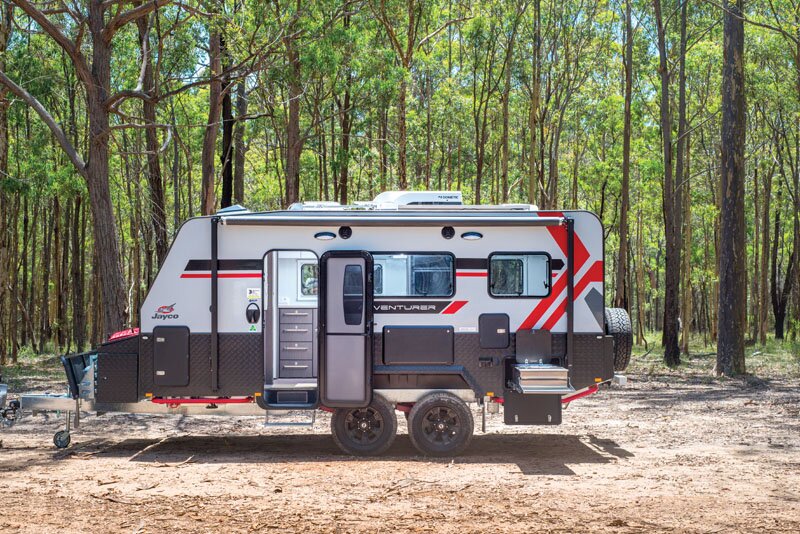
The Adventurer weighs in at 2660kg empty and 3200kg full, which puts it on the heavier side of caravans this length (in fact, five of the Coromal Evolution XC models are lighter than it, despite all of them being longer). At tare, around 180kg will rest on the ball, which is good because that’s a number that’s likely to increase once the front storage boxes are filled, and Jayco has left plenty of room to move. Given its bulk, the 16.50-3 will need a decent sized four-wheel drive in front of it, and given its off-road ability (which I’ll get to), something that can handle a rough road or two.
It’s well equipped, though, which no doubt contributes to some of the weight. Almost no comfort is spared and the caravan has a Dometic Harrier inverter air conditioner in the roof (its inverter run compressor eliminates the high current draw on start-up that prevents many air-cons being used with smaller capacity generators. Although the Harrier is a 3.1kW model, it’ll happily run off a 2KVa generator like the Briggs & Stratton P2200) and Truma gas ducted heating throughout the van. If it’s hot and you can’t run the air con, there are even two Sirocco fans at the bed. Hot water is supplied via the large capacity 22L gas electric Truma unit, there’s a 3kg washing machine, a 24in telly and good quality stereo system.
It’s very neat inside and Jayco has spurned convention to make the most of the space. The bed, rather than the ensuite, is at the back and in east-west orientation, so although access for two people is slightly compromised, there’s no wasted space for corridors around its sides. The base lifts up, so you can get to the storage underneath easily.
The kitchen and the dinette butt right up to the bed edge creating a very usable space. The dinette’s an L-shape and the telescopic leg, adjustable table can push down to the seat base to create a handy little bed for occasional sleep-overs. I really like these tables because the table top can also move in any direction to create room where it’s needed (or jam a young child into their seat so they’re forced to eat over their plate and can’t drop food on the genuine leather).
Jayco has paid special attention to the frustration of Outback model owners who constantly have their drawers scattered across the floor when they travel roads rougher than Jayco says they should, so has beefed up the drawer runners. These ones can’t pop out and don’t shake loose or even rattle much when fully open. It’s just one part of the cabinetry upgrade in the Adventurer models, along with stronger frames and better fastening to the caravan’s walls. It’s one sign that the off-road capability isn’t just a checker-plate and tyre upgrade, like some ‘off-road’ caravans are.
For a 16-footer with a full-ensuite, it’s got a spacious kitchen and Jayco’s colour choices have been very good for the last few years (there’s four different leather options, too). The kitchen has a four-burner stove with an oven and rangehood, accompanied by a Dometic Coolmatic RPD 218, a 215-litre upright compressor fridge/freezer (171- and 44-litres capacity respectively). The tapware is very modern and I really like that the overhead cupboards are taller than most so fit a bit more in. The sink also does without a stainless steel drying area, so the preparation space is a bit more user-friendly. I did find that the decorative surround around the microwave is so close fitting, the door fouls on it when you open it, and there was also some delamination of the edging on some of the overhead cabinets.
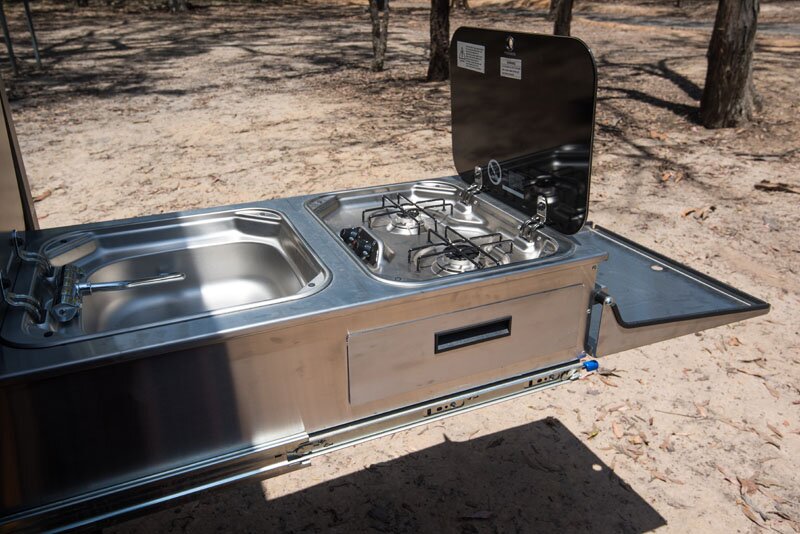
There is a second, slide-out kitchen outside. It’s a much more modest affair, but the stainless-steel unit has a small sink and two burner stove, along with a fold out bench area that a small Weber will fit easily on. Handily, there’s a gas bayonet under the kitchen.
The van’s ensuite is tucked into the front and this is likely because the dual-axle 16 footer’s wheel arches take up more room than most 16-footers’ single axles would, and so the bed doesn’t fit there and still allow for a door. It’s a good fit, though, as the counter tucks in under the sloping front wall and leaves room for little cubbies in front of the shower cubicle. Jayco’s specified the ensuite with a 3kg top loading washing machine and ceramic bowl, and a Thetford cassette dunny.
The Adventurer has quite a sophisticated electrical system all run and monitored through Jayco’s proprietary J-Hub system that it developed in conjunction with Setec. The battery management system keeps tabs on two 120Ah batteries that can be charged from the three 160W solar panels on the roof, the car, mains power or a generator. Using the tablet-like control panel above the door you can check state-of charge, battery capacity, water tank capacity and even how many hours of usable battery capacity the van has left.
Talking water capacity, there are three tanks under the caravan. Two of them, both 82-litres, are general purpose water and plumbed to the sinks, shower and toilet, although the third, a 60-litre tank, has its own pump and is plumbed only to the filtered water tap on the inside sink, so there’s never any question about the quality of the drinking water.
Jayco hasn’t just beefed up the cabinetry and checkerplate on the Adventurer, the chassis and suspension are also different from the on-road and Outback models. There’s extra reinforcing around the rear bumper, as well as the angled cutaway and scrub bars to improve departure angle. The heaviest duty J-Tech suspension is used, but with twin shocks instead of singles on each arm to handle the sort of roads it can be taken on. Early on in production Jayco had problems with walls delaminating and bubbling, but that’s been rectified too, so the hail-resistant one-piece roof and walls will look good for years to come.
Most importantly, Jayco’s softened its stance on off-roading, so it’ll warrant these vans even if they’re taken, responsibly, down rough roads. For example, “Movement or damage caused by dislodgment of appliances and fittings resulting from hard impact or heavy landings or severely rutted roads or tracks,” is not covered in an Outback, but is in the Adventurer, provided “off-road use where the road is not suitable for travel” is avoided. So, don’t drive where a caravan rightfully shouldn’t go and you’ll be fine.
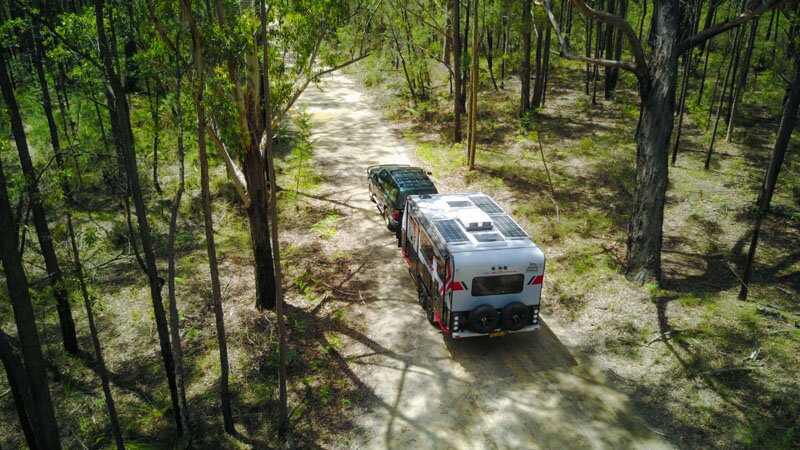
So, was the hype unwarranted when the Adventurer first came out? I still don’t think so. The Adventurer is a good off-road caravan and has all the hallmarks of a comfortable tourer. But a few things don’t play in its favour, and that’s usually sitting next to it in the dealer yard – a Jayco Journey Outback. The Journey 16.51-3 Outback is just $53,890, so for a considerable amount less, you can get a comfortable semi off-roader that weighs less and has many of the same features. And although it can’t officially go quite as far off-road, there are plenty out there doing it anyway, while others realise they just don’t need a full off-roader to trundle up the east coast.
If, however, the east coast isn’t your thing, and you’re after a dedicated off-roader, the Jayco should be on your list. It’s good looking, well priced and very well featured. And it’ll go further than an Outback van, every day of the week.
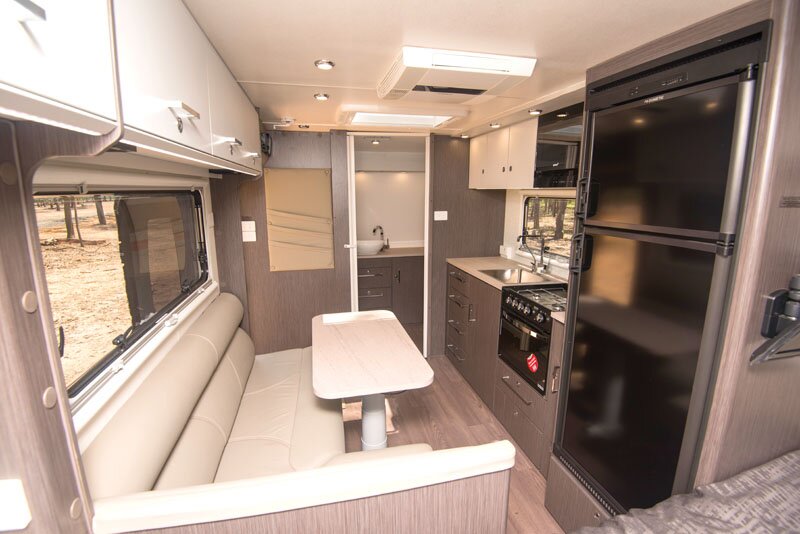
The Basics
Jayco Adventurer 16.50-3
Chassis
Style – Off-road touring
Chassis – Endurance, hot dip galvanised
Suspension – Dual shock, J-Tech independent
Hitch – Cruisemaster DO-35
Dimensions and Weights
Body Length – 5180mm
Travel Length – 7400mm
Width – 2490mm
Height – 3100mm
Tare Weight – 2660kg
ATM – 3200g
Tow Ball – 180kg
Capacities
Water – 2x82L and 1x60L
Grey Water – NA
Gas – 2 x 9kg
Fridge – 215-litres
Battery – 2 x 120ah AGM
Solar – 3×160-watt
Warranty
Two-year manufacturer’s and five-year structural warranty
Price
From $79,990 tow away
CONTACT
Jayco Nowra
nowra.jayco.com.au
- Shows Cancelled amid COVID-19 Fears - 14 March 2020
- Windsor Caravans Now Does Motorhomes - 11 February 2020
- First Look – Frontline HiAce 6th Generation - 10 February 2020
- ACC Heading to Charters Towers - 5 February 2020
- New HiAce Frontline Camper Unveiled - 4 February 2020
- Should You Travel To Bushfire Affected Communities? - 12 January 2020
- Can Your Caravan Help After The Bushfires - 11 January 2020
- Why We Use Camplify And You Should Too - 29 October 2019
- Trakka Akuna Campervan – First Look - 24 October 2019
- Car and Caravan Weight Calculator - 11 October 2019

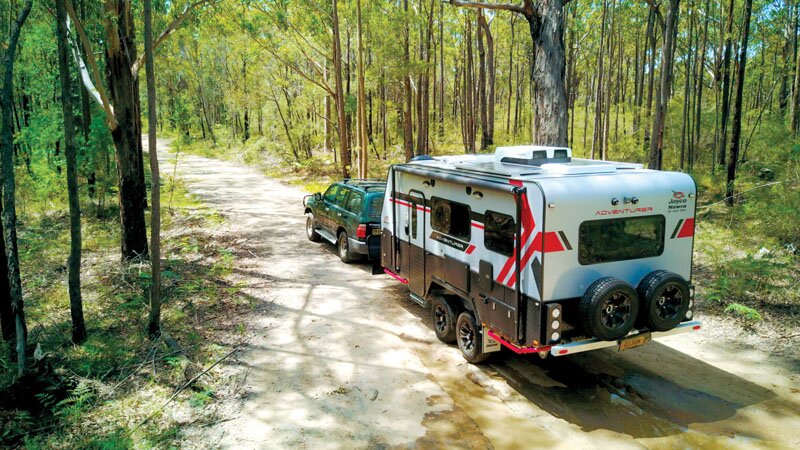
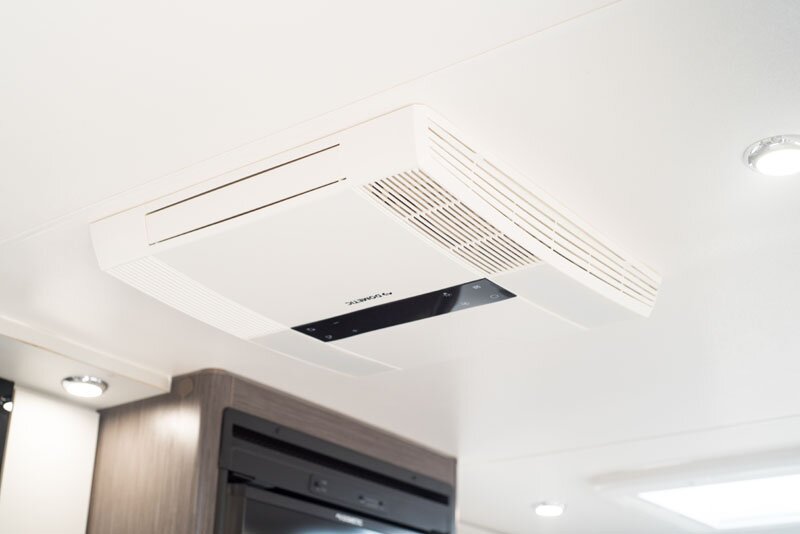
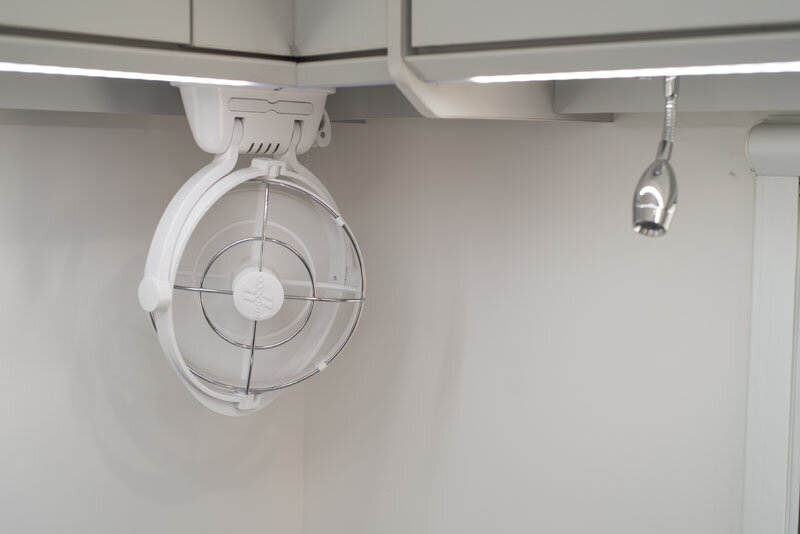
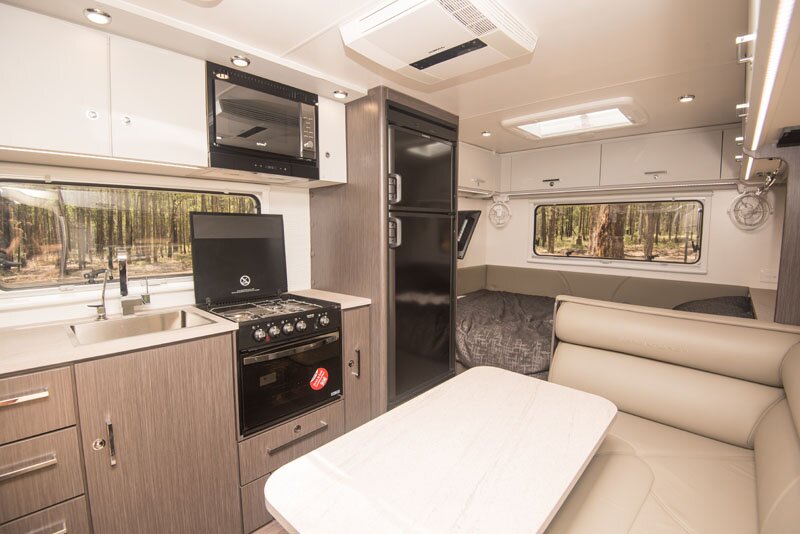
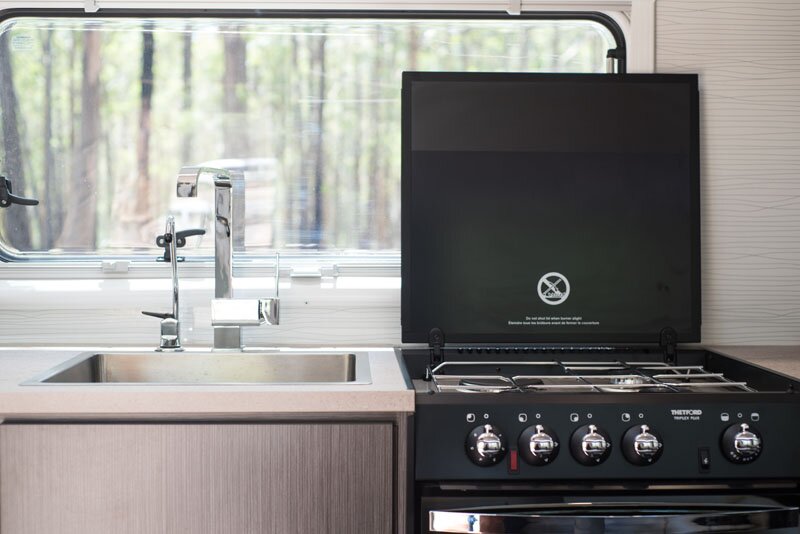
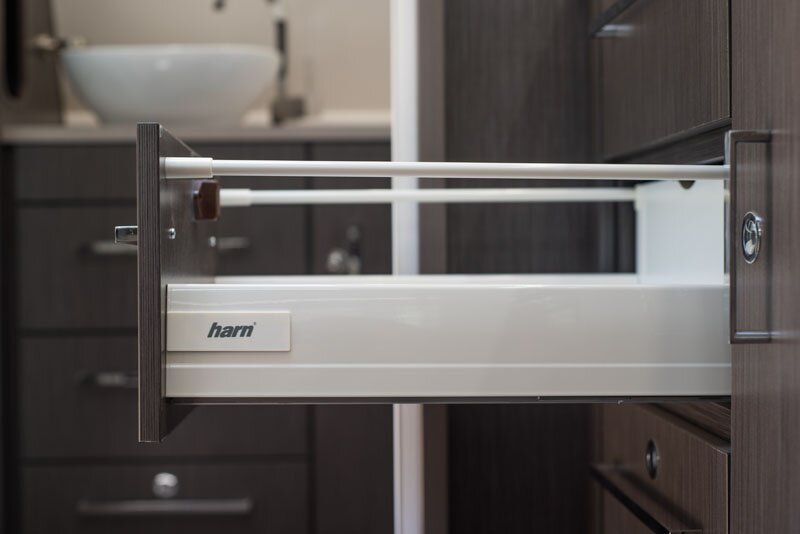
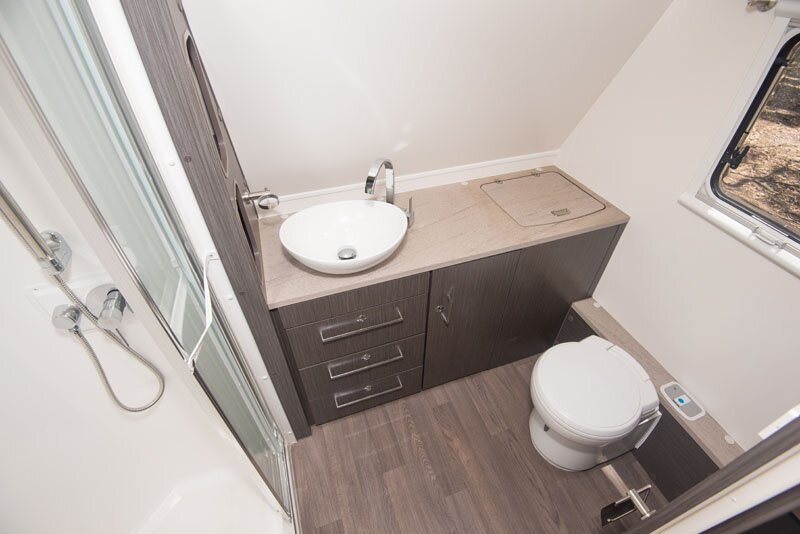
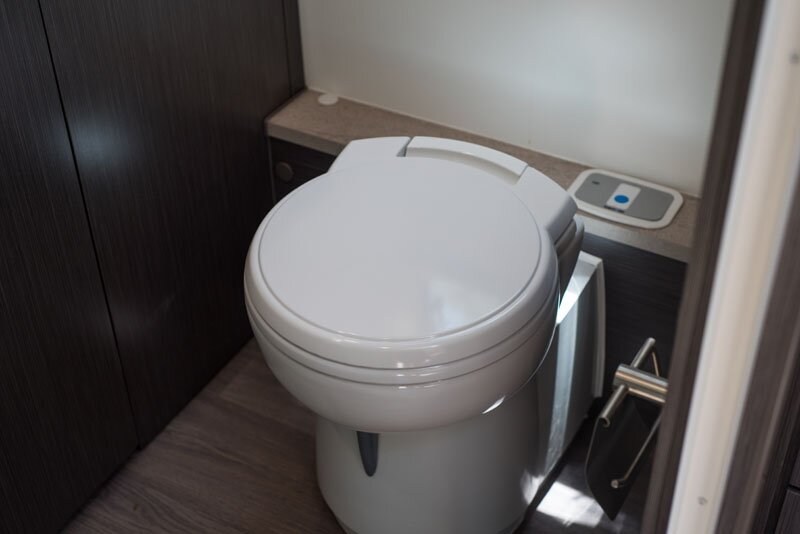
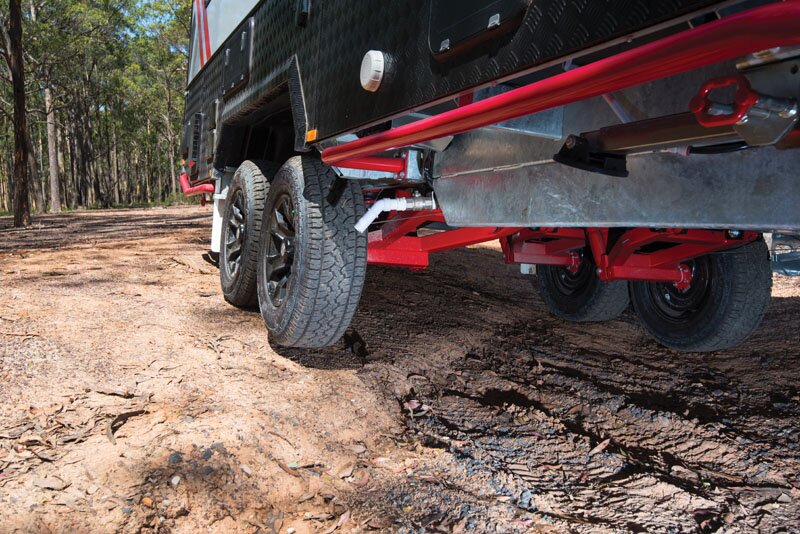
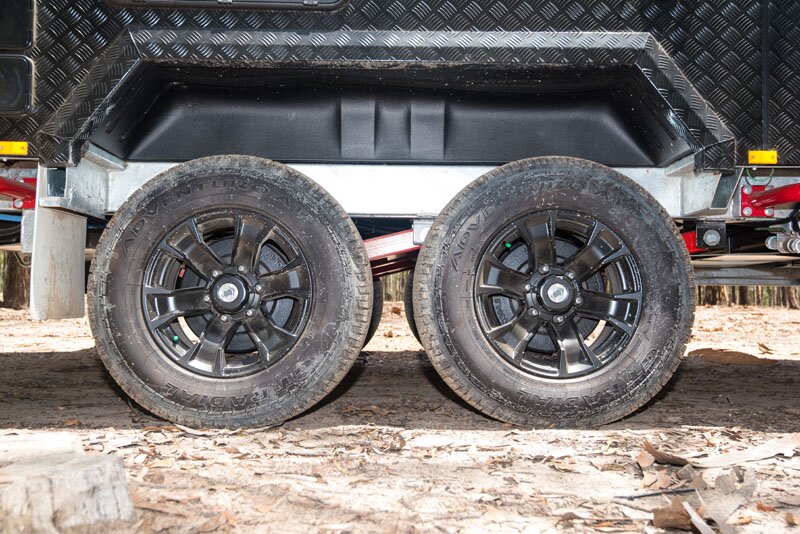
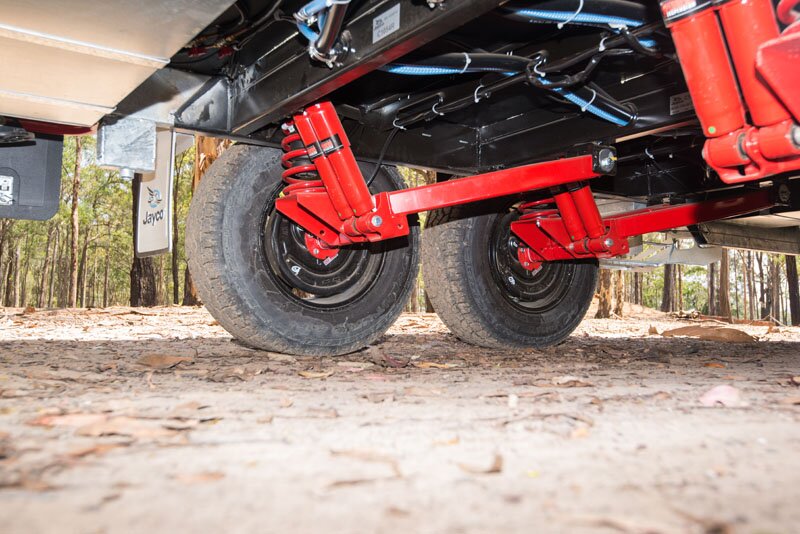
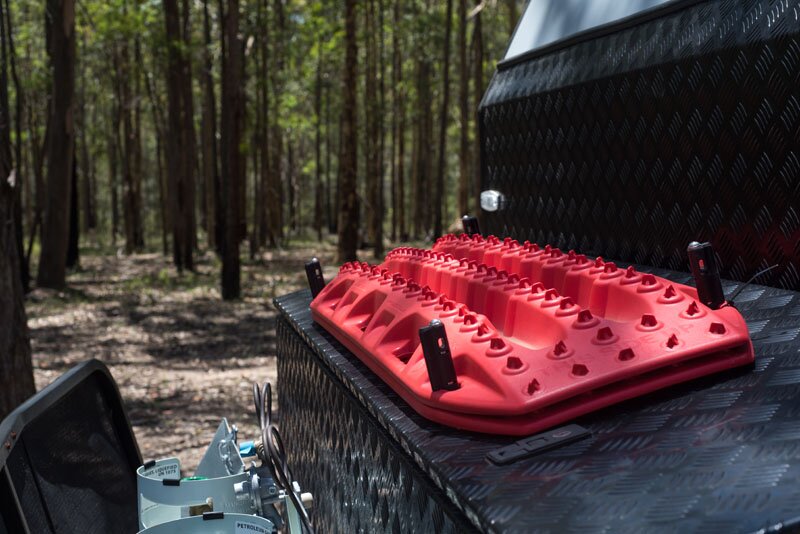
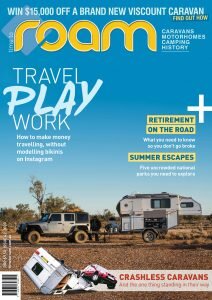
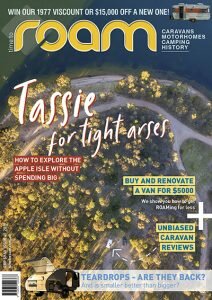
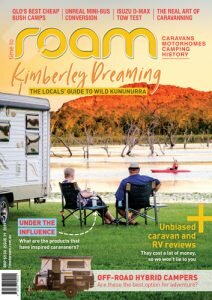
6 Comments
Adrian
I have one of these excellent vans. My 2019 has lithium batteries, instant hot water system and flat flexible solar panels. The larger washing machine is a treat and massive amount of cabinetry. The weight of the van has also come down 2,560 KG and tows beautifully behind my Landcruiser 200. The overall quality is way better than an Outback model and feels solid all round. I should know because I had one. It does cost more, but I think it will be durable in the long run with good resale value. The east west bed is perfect for my 6.5 foot frame that did not work well with island beds. I think this van is a winner.
Max
Hi Adrian, I am seriously looking at & considering a 16’5 Adventurer. As an owner, what are your real everyday opinions. We intend to travel from QLD, through the Donahue/Plenty Highway to Alice Springs, recharge etc, & continue up the start of the Tanami, then turn NW onto the Gary Junction highway, to Marble Bar. My friends did it in a Trakmaster Pilbara extreme, & feel the Adventurer will, with care & attention, do it as well. Overall, how is the fit & finish on yours? especially in regards to the overhead cupboard to the right of the microwave . Does it jam on the overhead down light bulb?. Is yours a 16’5?. How many Lithium batteries, does the car charge the batteries through the BMPro JD-35 while driving. Conflicting information on hand at present?. I thank you for your honest appraisel & replies. regards Max
Melodie Villiers
Hi Adrian,
F
or the price of the van, having a soft start inverter air-con and the fact your model has lithium batteries I trust the air-con, microwave, washing machine, toaster, electric jug etc, run – at separate times – with out the need for a standard fuel operated generator.
Just wondering if this is the case???
Rod
Is it true that Jayco has just discontinued these?
Max
Hi Rod, I am seriously looking at & considering the Jayco adventurer. I have it on good authority that the Adventurer build is “suspended” for the time being. Be that as it may, I feel Jayco could have better promoted this affordable “true ” offroader. Cheaper than a Trakmaster Pilbara with a lot of Trakmaster extras included in the Jayco cost. Happy wife & me.
Christopher Gallagher
Interesting article. I amdoing the research for an off grid van now. I had a Jayco Swan camper for ten years, good as gold from day one till it went to its new family.